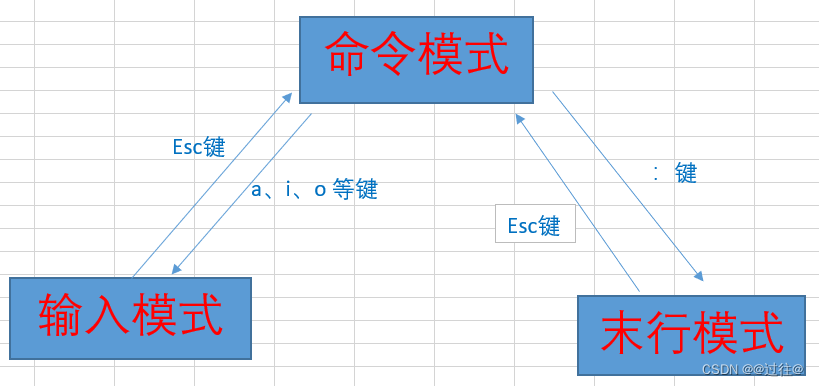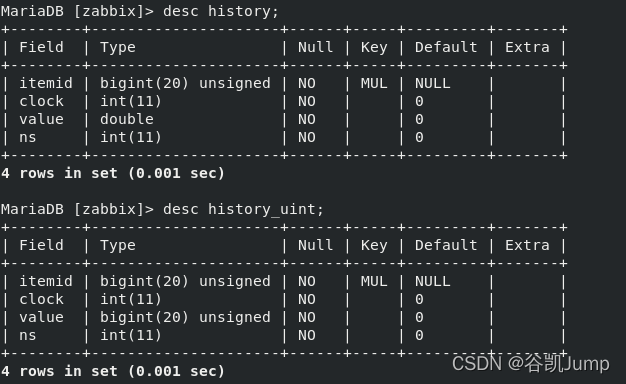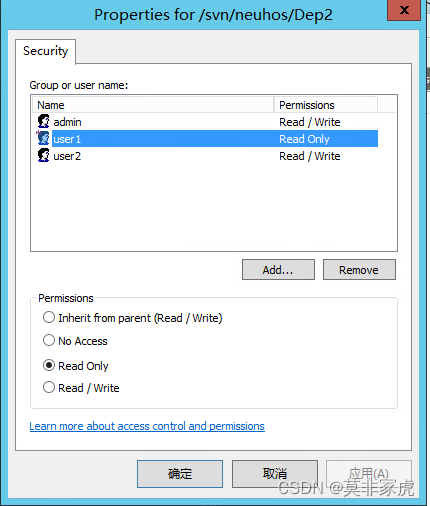当前位置:网站首页>配置MSTP功能示例
配置MSTP功能示例
2022-08-03 05:28:00 【念舒_C.ying】
组网需求
在一个复杂的网络中,网络规划者由于冗余备份的需要,一般都倾向于在设备之间部署多条物理链路,其中一条作主用链路,其他链路作备份。这样就难免会形成环形网络,若网络中存在环路,可能会引起广播风暴和MAC桥表项被破坏。网络规划者规划好网络后,可以在网络中部署MSTP协议预防环路。MSTP可阻塞二层网络中的冗余链路,将网络修剪成树状,达到消除环路的目的。
如图1所示,为实现VLAN2~VLAN10和VLAN11~VLAN20的流量负载分担,MSTP引入了多实例。MSTP可设置VLAN映射表,把VLAN和生成树实例联系起来。图1中RouterA、SwitchA、SwitchB、SwitchC和SwitchD都运行MSTP。
图1 配置MSTP功能组网图

配置思路
采用以下思路配置MSTP功能:
1. 在处于环形网络中的交换设备上配置MSTP基本功能,包括:
a. 配置环网中的设备生成树协议工作在MSTP模式。
b. 配置MST域并创建多实例,实现流量的负载分担。
c. 在MST域内,配置各实例的根桥与备份根桥。
d. 配置各实例中某端口的路径开销值,实现将该端口阻塞。
e. 使能MSTP,实现破除环路,包括:
设备全局使能MSTP。
与终端设备相连的端口,去使能MSTP,或者配置为边缘端口。
除与终端设备相连的端口外,其他端口使能MSTP。
说明:
与PC机相连的端口不用参与MSTP计算,建议将其去使能MSTP,或者配置为边缘端口。
2. 配置保护功能,实现对设备或链路的保护。例如:在各实例的根桥设备指定端口配置根保护功能。
3. 配置设备的二层转发功能。
操作步骤
1. 配置MSTP基本功能
a. 配置环网中的设备生成树协议工作在MSTP模式
# 配置RouterA的MSTP工作模式,MSTP为设备缺省工作模式。
<Huawei> system-view
[Huawei] sysname RouterA
[RouterA] stp mode mstp
# 配置交换设备SwitchA,SwitchB,SwitchC和SwitchD的MSTP工作模式。
b. 配置环网中的设备到域名为RG1的域内,创建实例MSTI1映射VLAN2~VLAN10,创建实例MSTI2映射VLAN11~VLAN20
# 配置RouterA的MST域。
[RouterA] stp region-configuration
[RouterA-mst-region] region-name RG1
[RouterA-mst-region] instance 1 vlan 2 to 10
[RouterA-mst-region] instance 2 vlan 11 to 20
[RouterA-mst-region] active region-configuration
[RouterA] quit
# 配置交换设备SwitchA、SwitchB、SwitchC和SwitchD的MST域。域名为RG1,创建实例MSTI1映射VLAN2~VLAN10,创建实例MSTI2映射VLAN11~VLAN20。
c. 在域RG1内,配置MSTI1与MSTI2的根桥与备份根桥
# 配置MSTI1的根桥为RouterA。
[RouterA] stp instance 1 root primary
# 配置MSTI1的备份根桥为SwitchA。
# 配置MSTI2的根桥为RouterA。
[RouterA] stp instance 2 root primary
# 配置MSTI2的备份根桥为SwitchB。
d. 配置实例MSTI1和MSTI2中需被阻塞的端口的路径开销值大于缺省值,实现将该端口阻塞
说明:
· 端口路径开销值取值范围由路径开销计算方法决定,这里选择使用华为私有计算方法为例,配置将被阻塞的端口的路径开销值为200000。
· 如实际场景中的交换机设备为非华为设备,请遵循“同一网络内所有交换设备的端口路径开销应使用相同计算方法”的原则进行配置。配置其他计算方法,请查阅STP路径开销列表。
# 配置RouterA的端口路径开销缺省值的计算方法为华为私有计算方法。
[RouterA] stp pathcost-standard legacy
# 配置SwitchA、SwitchB、SwitchC和SwitchD的端口路径开销缺省值的计算方法为华为的私有计算方法。
# 如图1,配置SwitchC的端口Eth0/0/4在实例1中的路径开销值为200000。
# 如图1,配置SwitchD的端口Eth0/0/4在实例2中的路径开销值为200000。
e. 使能MSTP,实现破除环路
将与PC终端相连的端口去使能MSTP
# 如图1,配置交换机设备SwitchC的端口,Eth0/0/2和Eth0/0/3,去使能MSTP或者配置为边缘端口。
# 如图1,配置交换机设备SwitchD的端口,Eth0/0/2和Eth0/0/3,去使能MSTP或者配置为边缘端口。

1.设备全局使能MSTP
# 设备RouterA全局使能MSTP。
[RouterA] stp enable
# 为交换机设备SwitchA,SwitchB,SwitchC和SwitchD全局使能MSTP。
除与PC终端相连的端口外,端口使能MSTP
# 设备RouterA端口Eth2/0/0和Eth2/0/1使能MSTP。
[RouterA] interface ethernet 2/0/0
[RouterA-Ethernet2/0/0] stp enable
[RouterA-Ethernet2/0/0] quit
[RouterA] interface ethernet 2/0/1
[RouterA-Ethernet2/0/1] stp enable
[RouterA-Ethernet2/0/1] quit
# 如图1,交换机设备SwitchA,SwitchB,SwitchC和SwitchD除与PC终端相连的端口外,其他端口使能MSTP。
2. 配置保护功能
# 在根桥RouterA的端口Eth2/0/0和Eth2/0/1上启动根保护。
[RouterA] interface ethernet 2/0/0
[RouterA-Ethernet2/0/0] stp root-protection
[RouterA-Ethernet2/0/0] quit
[RouterA] interface ethernet 2/0/1
[RouterA-Ethernet2/0/1] stp root-protection
[RouterA-Ethernet2/0/1] quit
3. 配置处于环网中的设备的二层转发功能
在交换设备RouterA、SwitchA、SwitchB、SwitchC和SwitchD上创建VLAN
# 在RouterA上创建VLAN2~VLAN20。
[RouterA] vlan batch 2 to 20
# 在交换机SwitchA和SwitchB上创建VLAN2~VLAN20。
# 在交换机SwitchC上创建VLAN2~VLAN10。
# 在交换机SwitchD上创建VLAN11~VLAN20。
将交换设备上接入环路中的端口加入VLAN
# 将RouterA的端口Eth2/0/0和Eth2/0/1加入VLAN2~VLAN20。
[RouterA] interface ethernet 2/0/0
[RouterA-Ethernet2/0/0] port link-type trunk
[RouterA-Ethernet2/0/0] port trunk allow-pass vlan 2 to 20
[RouterA-Ethernet2/0/0] quit
[RouterA] interface ethernet 2/0/1
[RouterA-Ethernet2/0/1] port link-type trunk
[RouterA-Ethernet2/0/1] port trunk allow-pass vlan 2 to 20
[RouterA-Ethernet2/0/1] quit
# 将SwitchA的端口Eth0/0/1、Eth0/0/2和Eth0/0/3加入VLAN2~VLAN20。
# 将SwitchB的端口Eth0/0/1、Eth0/0/2和Eth0/0/3加入VLAN2~VLAN20。
# 将SwitchC的端口Eth0/0/1、Eth0/0/2、Eth0/0/3、Eth0/0/4加入VLAN2~VLAN10。
# 将SwitchD的端口Eth0/0/1、Eth0/0/2、Eth0/0/3、Eth0/0/4加入VLAN11~VLAN20。
4. 验证配置结果
经过以上配置,在网络计算稳定后,执行以下操作,验证配置结果。
# 在RouterA上执行display stp brief命令,查看端口状态和端口的保护类型,结果如下:
[RouterA] display stp brief
MSTID Port Role STP State Protection
0 Ethernet2/0/0 DESI FORWARDING NONE
0 Ethernet2/0/1 DESI FORWARDING NONE
1 Ethernet2/0/0 DESI FORWARDING ROOT
1 Ethernet2/0/1 DESI FORWARDING ROOT
2 Ethernet2/0/0 DESI FORWARDING ROOT
2 Ethernet2/0/1 DESI FORWARDING ROOT
在MSTI1中,由于RouterA是根桥,RouterA的端口Eth2/0/0和Eth2/0/1成为指定端口。在MSTI2中,RouterA同样是根桥,RouterA的端口Eth2/0/0和Eth2/0/1是指定端口。
# 在SwitchA查看端口状态和端口的保护类型。在MSTI1中,端口Eth0/0/1成为根端口,端口Eth0/0/2和端口Eth0/0/3成为指定端口。在MSTI2中,端口Eth0/0/1成为根端口,端口Eth0/0/2和端口Eth0/0/3成为指定端口。
# 在SwitchB查看端口状态和端口的保护类型。在MSTI1中,端口Eth0/0/1成为根端口,端口Eth0/0/2和端口Eth0/0/3成为指定端口。在MSTI2中,端口Eth0/0/1成为根端口,端口Eth0/0/2和端口Eth0/0/3成为指定端口。
# 在SwitchC查看端口状态和端口的保护类型。在MSTI1中,端口Eth0/0/1成为根端口,端口Eth0/0/4被阻塞。在MSTI2中,端口Eth0/0/1成为根端口,端口Eth0/0/4成为指定端口。
# 在SwitchD查看端口状态和端口的保护类型。在MSTI1中,端口Eth0/0/1成为根端口,端口Eth0/0/4成为指定端口。在MSTI2中,端口Eth0/0/1成为根端口,端口Eth0/0/4被阻塞。
配置文件
RouterA的配置文件
#
sysname RouterA
#
vlan batch 2 to 20
#
stp instance 1 root primary
stp instance 2 root primary
stp pathcost-standard legacy
#
stp region-configuration
region-name RG1
instance 1 vlan 2 to 10
instance 2 vlan 11 to 20
active region-configuration
#
interface Ethernet2/0/0
port link-type trunk
port trunk allow-pass vlan 2 to 20
stp root-protection
#
interface Ethernet2/0/1
port link-type trunk
port trunk allow-pass vlan 2 to 20
stp root-protection
#
return
SwitchA的配置文件
#
sysname SwitchA
#
vlan batch 2 to 20
#
stp instance 1 root secondary
stp pathcost-standard legacy
#
stp region-configuration
region-name RG1
instance 1 vlan 2 to 10
instance 2 vlan 11 to 20
active region-configuration
#
interface Ethernet0/0/1
port link-type trunk
port trunk allow-pass vlan 2 to 20
#
interface Ethernet0/0/2
port link-type trunk
port trunk allow-pass vlan 2 to 20
#
interface Ethernet0/0/3
port link-type trunk
port trunk allow-pass vlan 2 to 20
#
return
SwitchB的配置文件
#
sysname SwitchB
#
vlan batch 2 to 20
#
stp instance 2 root secondary
stp pathcost-standard legacy
#
stp region-configuration
region-name RG1
instance 1 vlan 2 to 10
instance 2 vlan 11 to 20
active region-configuration
#
interface Ethernet0/0/1
port link-type trunk
port trunk allow-pass vlan 2 to 20
#
interface Ethernet0/0/2
port link-type trunk
port trunk allow-pass vlan 2 to 20
#
interface Ethernet0/0/3
port link-type trunk
port trunk allow-pass vlan 2 to 20
#
return
SwitchC的配置文件
#
sysname SwitchC
#
vlan batch 2 to 10
#
stp pathcost-standard legacy
#
stp region-configuration
region-name RG1
instance 1 vlan 2 to 10
instance 2 vlan 11 to 20
active region-configuration
#
interface Ethernet0/0/1
port link-type trunk
port trunk allow-pass vlan 2 to 10
#
interface Ethernet0/0/2
port link-type trunk
port trunk allow-pass vlan 2 to 10
stp disable
#
interface Ethernet0/0/3
port link-type trunk
port trunk allow-pass vlan 2 to 10
stp disable
#
interface Ethernet0/0/4
port link-type trunk
port trunk allow-pass vlan 2 to 10
stp instance 1 cost 200000
#
return
SwitchD的配置文件
#
sysname SwitchD
#
vlan batch 11 to 20
#
stp pathcost-standard legacy
#
stp region-configuration
region-name RG1
instance 1 vlan 2 to 10
instance 2 vlan 11 to 20
active region-configuration
#
interface Ethernet0/0/1
port link-type trunk
port trunk allow-pass vlan 11 to 20
#
interface Ethernet0/0/2
port link-type trunk
port trunk allow-pass vlan 11 to 20
stp disable
#
interface Ethernet0/0/3
port link-type trunk
port trunk allow-pass vlan 11 to 20
stp disable
#
interface Ethernet0/0/4
port link-type trunk
port trunk allow-pass vlan 11 to 20
stp instance 2 cost 200000
#
return
边栏推荐
猜你喜欢
随机推荐
QT 连续生成指定范围内不重复的随机值
高密度 PCB 线路板设计中的过孔知识
超全!9种PCB表面处理工艺大对比
流式低代码编程,拖拽节点画流程图并运行
宝塔负载均衡配置及nfs共享
ZBrush+Substance Designer2021制作高品质3D角色模型全流程!
SVN客户端安装及操作文档
次世代建模到底需要哪些美术基础
沉铜/黑孔/黑影工艺,PCB该 Pick 哪一种?
Monitoring Oracle11gR2 in Zabbix6.0 of OracleLinux8.6
数据库OracleRAC节点宕机处理流程
2021-06-20
用DirectX12绘制一个几何体的程序详述
树——二叉排序树(BST)
【IoU loss】IoU损失函数理解
2021-06-15
Oracle 11g silent install
如何使用md5码验证文件的一致性
mib browser无法接收snmp trap消息解决
【个人总结】MES系统开发/管理要点









